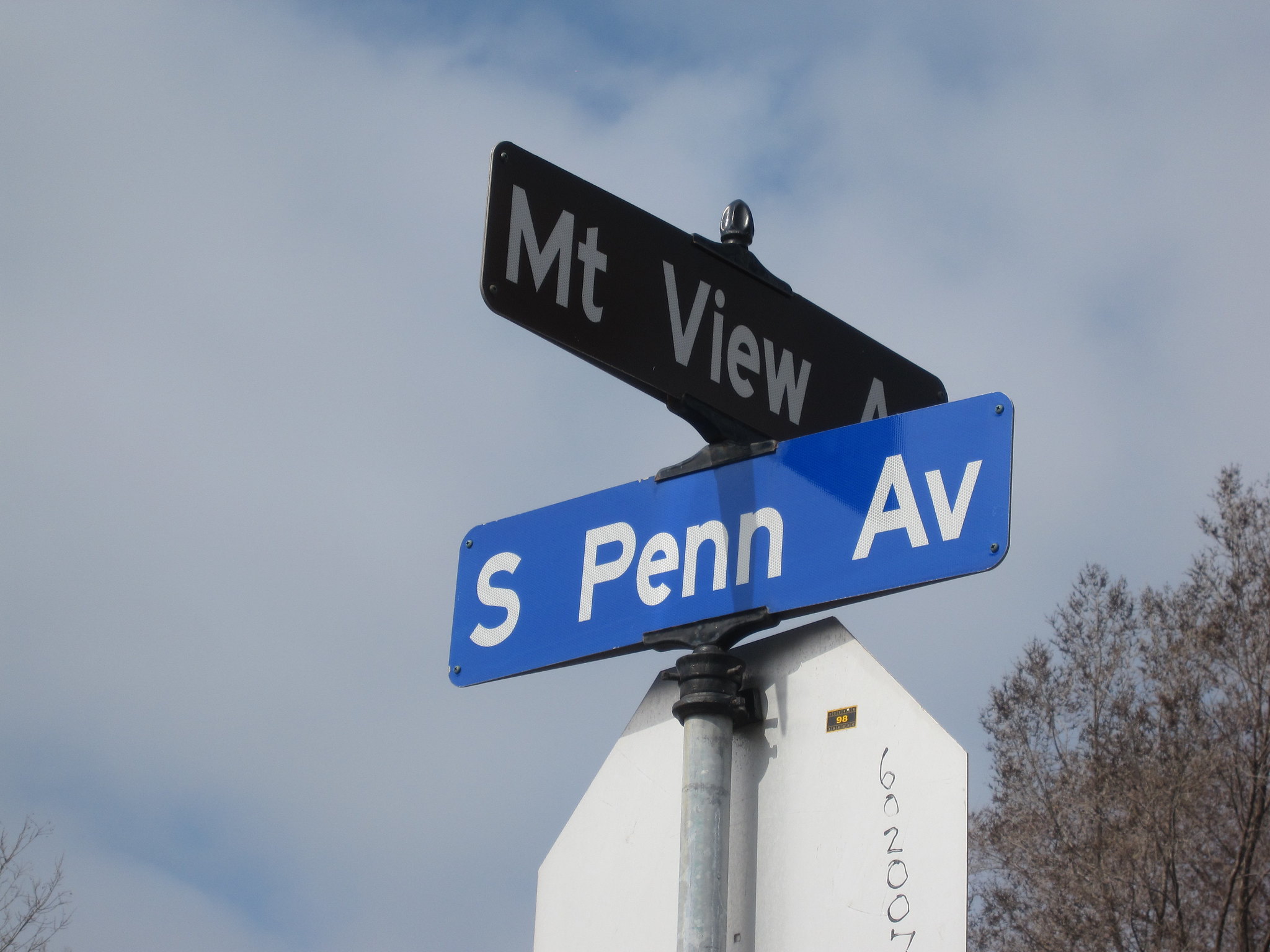This story originally appeared on The Minnesota Historian, a new local history website from Josh Biber.
The most common street names in the United States are what you would expect: First, Second, Third, Park, Main, Cedar, etc. But what about Bryant, Upton, Washburn, or Dupont?
Cities throughout the country employ naming conventions for ease of navigation. Minneapolis uses a number of different naming conventions in different areas of the city to simplify navigation. In Minneapolis, avenues run directionally north to south; streets run directionally east to west. Northeast Minneapolis's grid is comprised of the names of U.S. presidents. Western Minneapolis—and by extension much of the west metro—names its avenues and streets in a tidy alphabetical order. This alphabetical order repeats itself across at least seven different iterations beginning one block west of Lyndale Avenue, and ending in Medina.
The ABC Avenues
This column appeared in the Star Tribune's October 17, 1985 edition (and unfortunately I found this column after researching each avenue's namesake using other sources... It would have saved a lot of time had I found this initially).

Aldrich Avenue: Named after the poet Thomas B. Aldrich (1836-1907). Avenue's named after famed poets is a reoccurring theme.
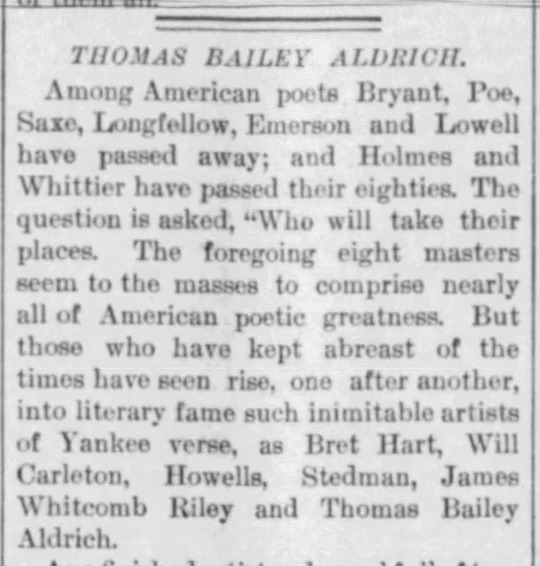
Bryant Avenue: The namesake of William Cullen Bryant (1794-1878), another famed poet of his time. Although I like to think Bryant Avenue was named after William Bryant who lost his false teeth in a Minneapolis saloon on July 19, 1904. Many local businesses adopted the Bryant name, including Bryant Lake Bowl and Lake & Bryant Cafe.
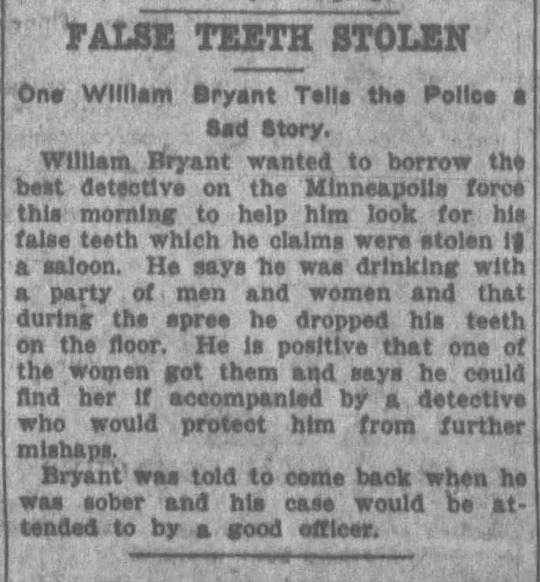
Colfax Avenue: President Ulysses S. Grant's vice president, Schuyler Colfax, wins the naming rights for the first "C" avenue in this list.
Dupont Avenue: Named after a naval commander in the Mexican-American and Civil War, Samuel Francis Dupont. Dupont died in 1886.
Emerson Avenue: Another poet earns their right to an avenue. Ralph Waldo Emerson (1803-1882)
Fremont Avenue: John C. Fremont (1813-1890) was an explorer, military man, and later U.S. Senator from California. In 1856 he was the first Republican nominee for president and founder of the California Republican Party. Fremont, Minnesota, is also named after John C. Fremont, who spent time in the area while campaigning for president.
Girard Avenue: A banker and slave owner, Stephen Étienne Girard (1750-1831) received naming rights for his efforts in saving the United States from economic and financial ruin during the War of 1812. Girard Avenue in Philadelphia is of the same namesake.
Hennepin Avenue: The first of three "H" avenues in Minneapolis, Hennepin Avenue is one of the main thoroughfares through Minneapolis. Father Louis Hennepin (1626-1704) is also the namesake of Hennepin County. The Avenue's southern terminus begins at Lakewood Cemetery to the east of Bde Maka Ska. Hennepin Avenue runs cardinally north until it bends to the northeast at W. 28th Street by Lake of the Isles. This bend shakes up the otherwise grid-like pattern of Minneapolis's block system and necessitates two additional "H" avenues for continuity of the avenue naming convention. Hennepin Avenue ultimately turns eastward once it crosses the Mississippi River, turning into Larpenteur Avenue at the Minneapolis-St. Paul border.
Holmes Avenue: My personal favorite avenue as I once lived on Holmes Avenue. Holmes Avenue is the shortest of all avenues, spanning only six blocks between Lakewood Cemetery to the south and ending at Lake Street to the north. Holmes Avenue essentially fills a gap left between Hennepin Avenue to the east and Humboldt Avenue to the west as these two avenues ignore Minneapolis's otherwise strict north-to-south street grid. Holmes Avenue has the honor of hosting Minneapolis's first entirely electrical home at 3405 Holmes Avenue South. This home offered conveniences that we find commonplace today such as a toaster, electric percolator, stove, Minneapolis' first electric dishwasher, lights, radio, fans, washing machine, telephone, and a touted 150 electric outlets throughout the home. Unfortunately, The Minneapolis Tribune was not on the forefront of gender equality in 1922 when describing the perks of the first electric dishwasher.
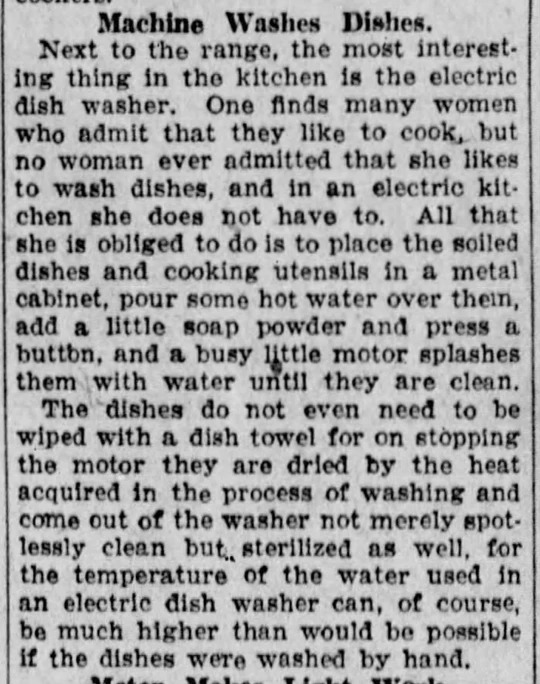
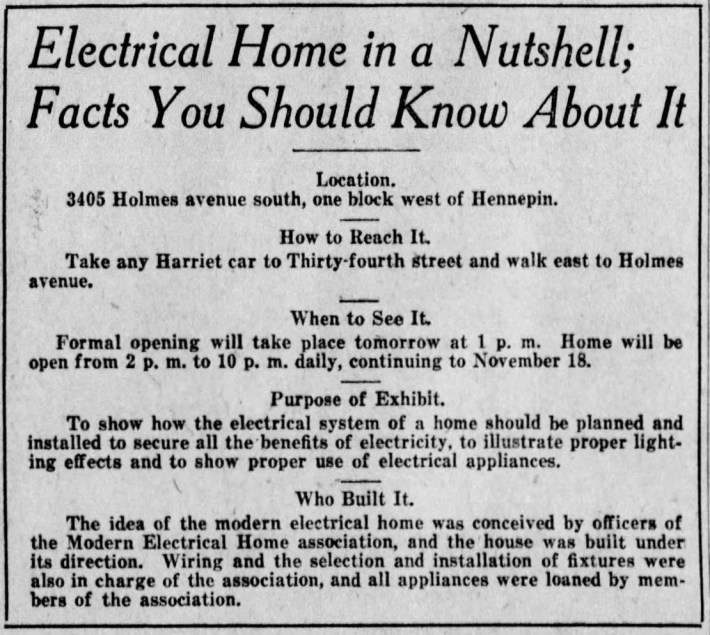
Humboldt Avenue: Friedrich Wilhelm Heinrich Alexander Von Humboldt (what a name!) is the namesake for the first of three "H" avenues in Minneapolis. Humboldt was a German scientist who lived from 1769-1859.
Irving Avenue: Washington Irving (1783-1859) was an American writer, historian, and diplomat to Spain and England. His most known works are Rip Van Winkle, 1819, and The Legend of Sleepy Hollow, 1820. Two Minneapolis businesses honor his namesake: Lake & Irving, known for their Luxe Burger; and James Irving Grooming, recently remodeled and rebranded, is a mainstay of Uptown since the early 2000s.
James Avenue: George Payne Rainsford James (1799-1860) was a famed English historical writer and novelist. He also served for the British Consul in New York, Massachusetts, and Virginia. A common theme we will continue to see—many of these avenues are named after individuals who never visited Minneapolis or Minnesota.
Knox Avenue: Outshone by Fort Knox in Kentucky, General Henry Knox (1756-1806) received naming convention for the first "K" avenue. Knox was senior general for the Continental Army and later U.S. Army. In Uptown, Knox Avenue is the last avenue before Bde Maka Ska interrupts the continuity of the street grid.
Logan Avenue: Most prominent in southwest and north Minneapolis, Logan Avenue was named after another war general, John A. Logan (1826-1886). Logan was on the Republican ticket in the 1884 presidential election as vice president for James G. Blaine, they lost to Grover Cleveland of the Democratic Party.
Morgan Avenue: We finally find another avenue named after a Minnesotan. George N. Morgan (1825-1866) moved to Minnesota in 1856 to operate a foundry and machine shop. Morgan served as colonel for the 1st Minnesota Volunteer Infantry from 1861-1863.
Newton Avenue: Have you ever seen an apple fall from a tree on Newton Avenue? Named after Sir Isaac Newton (1642-1726), this mathematician formulated the laws of motion and the theory of gravitation.
Oliver Avenue: Two theories emerge for the naming of Oliver Avenue. The first is that the name of this avenue pays tribute to Oliver Cromwell (1599-1658), an English Army General and ruler of the British Isles. The second theory is that the avenue is in memory of Oliver Presbyterian Church which once stood at 2647 Bloomington Ave. The church has been demolished and replaced by the Masjid Al Rahma Mosque.
Penn Avenue: William Penn (1644-1718) claims this avenue. Penn was also the founder of Pennsylvania—however, I'm sure he'd take more pride in Penn Avenue. Penn Avenue is home to a famed Minnesota quirky site, Mari's Place, a polka dot adorned house a few blocks south of Lake Harriet.
Queen Avenue: Likely named after Queen Victoria (1819-1901), however this is not confirmed. A tragedy occurred on Queen Avenue in 1937 when Patrick Corcoran—influential teamsters union leader for the American Federation of Labor Drivers—was murdered in the alley behind his home. Although unsolved, evidence suggests that the Chicago mafia was responsible for the killing. The mob reportedly opposed Corcoran's efforts to organize workers at Walgreens.
Russell Avenue: Another Minnesota native, Roswell Russell (1820-1896) was a store owner in the former city of St. Anthony.
Sheridan Avenue: Philip Sheridan (1831-1888) was a career militician for the Union Army. Sheridan was celebrated for defeating Confederate forces at Shenandoah.
Thomas Avenue: George Henry Thomas (1816-1870) was another militician for the Union Army. Thomas earned the nickname "the Rock of Chickamauga" for his defense at the 1863 battle of Chickamauga.
Upton Avenue: We are starting to see a trend here. Emory Upton (1839-1881) was another Union Army General.
Vincent Avenue: Thomas M. Vincent (1832-1909) was yet another Union Army General.
Washburn Avenue: Namesake of brothers William D. (1831-1912) and Cadwallader C. Washburn (1818-1882). Together, these brothers founded Minneapolis Milling Co., later Washburn-Crosby Milling Company, and finally becoming General Mills. Washburn High School in south Minneapolis is named after the two milling brothers.
Xerxes Avenue: Named after an ancient Mesopotamian ruler. Hey, "X" is a tough one.
York Avenue: Named after the state of New York; many New Yorkers relocated to Minneapolis during its flour milling heyday.
Zenith Avenue: Defined as "the highest point reached by an object," Zenith was chosen to fill the last alphabetical place.
The Second ABCs
The second sequence of ABC avenues begins immediately after Zenith Avenue. The first five avenues are in Minneapolis, the rest of the avenues span across Edina, St. Louis Park, Bloomington, and the city of Savage borrows some of the alphabetical naming as well.
Abbott, Beard, Chowen, Drew, Ewing, France, Glenhurst, Huntington, Inglewood, Joppa, Kipling, Lynn, Monterey, Natchez, Ottawa, Princeton, Quentin, Raleigh, Salem, Toledo, Utica, Vernon, Webster, Xenwood, Yosemite, Zarthan.
The Third ABCs
The third sequence of ABC avenues lives mostly within St. Louis Park, Crystal, New Hope, Bloomington, and Brooklyn Park. There are two "B" avenues in this series.
Alabama, Brookside, Brunswick, Colorado, Dakota, Edgewood, Florida, Georgia, Hampshire, Idaho, Jersey, Kentucky, Louisiana, Maryland, Nevada, Oregon, Pennsylvania, Quebec, Rhode Island, Sumter, Texas, Utah, Virginia, Wyoming, Xylon, Yukon, Zinran.
The Fourth ABCs
This iteration of avenues passes through several cities including St. Louis Park, Hopkins, Bloomington, Golden Valley, New Hope, Brooklyn Park, Maple Grove, Plymouth, and Minnetonka. These streets no longer follow a tidy block pattern, nor are they labeled as avenues anymore. Considering that most of this area was suburbanized post-war, the avenues twist and curve, often ending in cul-de-sacs.
Aquila, Boone, Cavell, Decatur, Ensign, Flag, Gettysburg, Hillsboro, Independence, Jordan, Kilmer, Lancaster, Melrose, Nathan, Orleans, Pilgrim, Quaker, Revere, Saratoga, Trenton, Union, Valley Forge, Wellington, Ximines, Yorktown, Zachary.
The Fifth ABCs
If the fourth ABC collection was a loose conglomeration of avenues, the fifth series scatters every which-way through the suburbia of Plymouth, Maple Grove, and Minnetonka. Theme returns with many of these avenues ending in -wood.
Arrowood, Balsam, Cottonwood, Deerwood, Evergreen, Forestview, Goldenrod, Hemlock, Ives, Jonquil, Kirkwood, Larch, Magnolia, Norwood, Oakview, Pinewood, Quinwood, Rosewood, Sycamore, Teakwood, Underwood, Vinewood, Wedgewood, Xenium, Yucca, Zinnia.
The Sixth ABCs
We're now entirely west of 494 now. The sixth go-round is named after various cities, towns, and one Minnesota corporation. These suburban neighborhood streets are within Plymouth and Maple Grove.
Annapolis, Berkshire, Cheshire, Dallas, Empire, Fernbrook, Glacier, Harbor, Ithaca, Juneau, Kingswood, Lanewood, Minnesota, Niagara, Orchid, Polaris, Quantico, Ranchwood, Shenandoah, Terraceview, Upland, Vicksburg, Weston, Xene, Yuma, Zanzibar.
The Seventh ABCs
We're in McMansion territory now.
Archer, Black Oaks, Comstock, Dunkirk, Everest, Fountain, Garland, Holly, Inland, Jewel, Kimberly, Lawndale, Merrimack, Narcissus, Olive, Peony, Queensland, Ranier, Shadyview, Troy, Urbandale, Vagabond, Walnut Grove, Xanthus, Yellowstone, Zircon.
The Eighth ABCs
On the border of Plymouth, Corcoran, and Medina, the eighth alphabet is just starting to develop loosely into farmland suitable for further development.
Alvarado, Brockton, Bergamot, Calamus, Cedar, Evergreen, Foxberry, Hunter, Hackamore.
Sources:
- Oliver Presbyterian Church—Minnesota Historical Society
- "Fixit Column"—Minneapolis Star and Tribune, October 17, 1985
- "Pat Corcoran, Teamster Union Leader, Murdered"—The Minneapolis Star, November 18, 1937
- "General George H. Thomas:—Robert Broadwater, 2009
- "Doors of Minneapolis' Electric Home to be Opened Tomorrow" — The Minneapolis Tribune, November 12, 1922
- "False Teeth Stolen"—The Minneapolis Journal, July 19, 1904
- "Thomas Bailey Aldrich"—The Minneapolis Tribune, September 20, 1891
- "The ABCs of Minneapolis Street Signs"—John A. Weeks III
- "City Streets Have a History of Their Own"—Armatage Neighborhood Association
- "When You Plan, You Begin with ABC"—Streets MN
